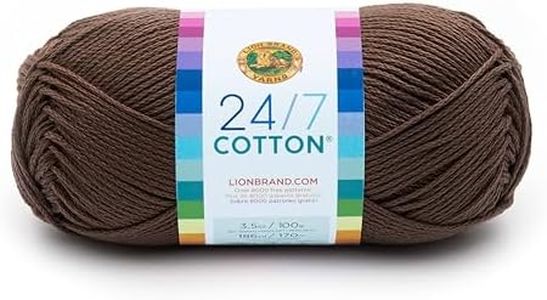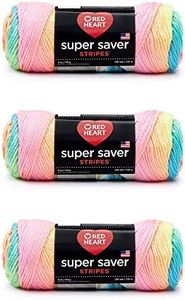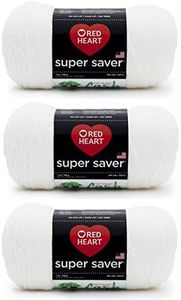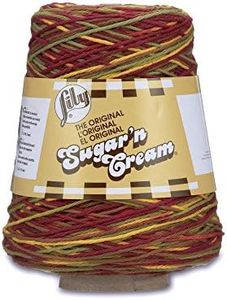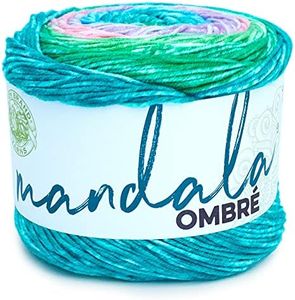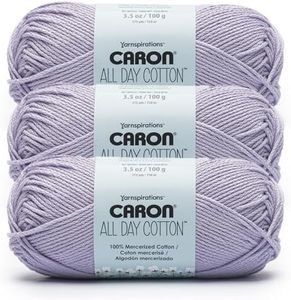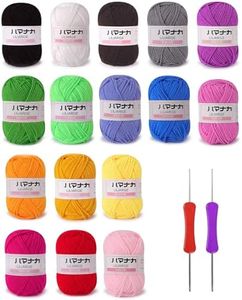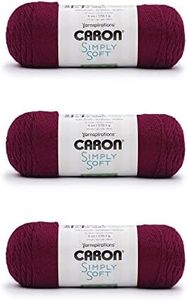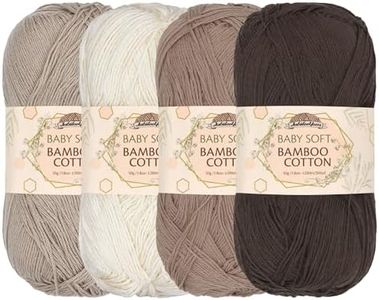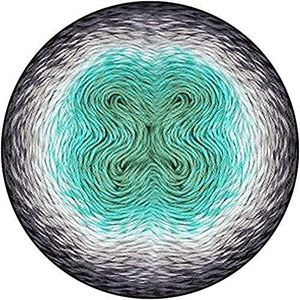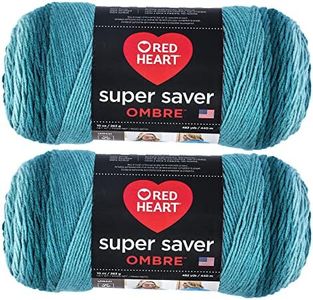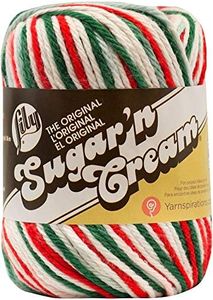We Use CookiesWe use cookies to enhance the security, performance,
functionality and for analytical and promotional activities. By continuing to browse this site you
are agreeing to our privacy policy
10 Best yarn
From leading brands and best sellers available on the web.Buying Guide for the Best yarn
Choosing the right yarn can be a fun and rewarding process, especially if you enjoy knitting, crocheting, or other crafts. To find the perfect yarn for your project, it's important to understand the different characteristics that can affect how your finished work looks and feels. Key things to consider include the yarn's weight, fiber content, texture, and care instructions. By understanding these features, you can select a yarn that matches not just the pattern requirements, but also your personal preferences and the final use of your creation.Yarn WeightYarn weight refers to the thickness of the yarn strand and is one of the first things to look at. This is important because it determines the look, feel, and drape of your completed project, as well as matching the pattern's requirements. Yarn weight categories range from lace (very thin) to super bulky (very thick). Thinner yarns, like lace or fingering, are suitable for delicate items such as shawls and socks, while medium weights (worsted, aran) are versatile for things like sweaters and blankets, and thicker weights (bulky) are great for projects that need to be warm and chunky, like scarves or hats. Consider what you want your final item to be like—lighter and airy, or warm and cozy—when picking the weight.
Fiber ContentThe fiber content tells you what the yarn is made from, and this greatly affects how it feels, how it wears, and how it's cared for. Common fibers are wool, cotton, acrylic, alpaca, silk, and blends. Wool is warm, elastic, and good for cold-weather items but can be itchy for sensitive skin. Cotton is cool, absorbent, and suitable for summer wear or dishcloths, though it lacks stretch. Acrylic is budget-friendly and easy to care for, ideal for everyday items, though it may not feel as luxurious. Choose fiber content based on your needs, such as softness for baby clothes, durability for socks, or washability for everyday use.
Yardage and Skein SizeYardage indicates how much length is in one skein or ball of yarn. This is important for making sure you purchase enough yarn for your whole project, as running out and finding a matching dye lot later can be difficult. Different projects require different amounts, and thicker yarns tend to have less yardage per skein. Check your pattern or make an estimate, and always buy a little extra. When comparing yarn, also look at the skein size, as two yarns might weigh the same but have different lengths due to density or thickness.
Texture and PlyTexture refers to whether the yarn is smooth or textured, and ply describes how many strands are twisted together. These factors influence how your project looks and feels, as well as how easy the yarn is to work with. Smooth, tightly plied yarns create crisp stitch definition and are good for showing off patterns, while loosely spun or textured yarns like boucle or chenille offer a more unique, cozy look but might be trickier to crochet or knit with. Consider whether you want defined stitches or a more fuzzy, textured appearance.
Care InstructionsCare instructions tell you how to wash and maintain your finished item, which can be vital depending on its use. Some yarns need to be hand-washed and laid flat to dry, while others are machine-washable and easy to care for. If you’re making something for babies or for frequent use, it’s practical to choose a yarn that can handle regular washing. Always check the recommended care instructions on the label before starting your project, so your creation remains beautiful over time.

